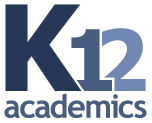Quranic schools were the only source of education in Bahrain prior to the 20th century; such schools were primarily dedicated to the study of the Qur'an. The first modern school to open in the country was a missionary elementary school setup in 1892 (according to one account) in Manama by the American Dutch Reformed Church, with the school's syllabus comprising English, Mathematics and the study of Christianity. Leading merchants in the country sent their children to the school until it was closed down in 1933 due to financial difficulties. The school reopened some years later under the name of Al Raja School where it operates till the present day.
Parents who could afford to fund their children's studies often sent them to schools in Bombay or Baghdad. Families of a predominately religious background often sent their children to religious institutions in the region, to madrasas in Mecca and Al-Hasa in mainland Arabia for Sunni students and to Najaf and Karbala for Shia students. As a result of this traditional religious education, there was a negative stigma attached to the American Mission School and only a few parents were bold enough to send their children to the school. Prior to the establishment of a public school in the country, Shia and Sunni students had limited interactions during their education. This can be attributed to different environments of learning; outside of religious institutions, Shia students acquired knowledge from matams whereas Sunni students did from majlises although neither matam nor majlis were officially recognised as educational institutions in their own right.
Following the end of the First World War, Western ideas became more widespread in the country, culminating in the opening of the first public school of Bahrain, Al-Hidaya Al-Khalifia Boys school, in the island of Muharraq in 1919. The school was founded by prominent citizens of Muharraq and was endorsed by the Bahraini royal family. The country's first Education Committee was established by several leading Bahraini merchants, headed by Shaikh Abdulla bin Isa Al-Khalifa, the son of the then-ruler of Bahrain Isa ibn Ali Al Khalifa, who acted as the de facto Minister of Education. The Education Committee was also responsible for managing the Al-Hidaya Boys school. The school was in fact the brainchild of Shaikh Abdulla, who suggested the idea after returning from post-World War I celebrations in England.
In 1926, a second public school for boys opened up in the capital city, Manama. Two years later, in 1928, the first public school for girls was established. Due to financial constraints suffered by the Education Committee, the Bahraini government took control of the schools in 1930.

